How to make a tote bag from old material
Learning how to make a tote bag is a great beginner sewing project everyone should try; discover everything you need to know.
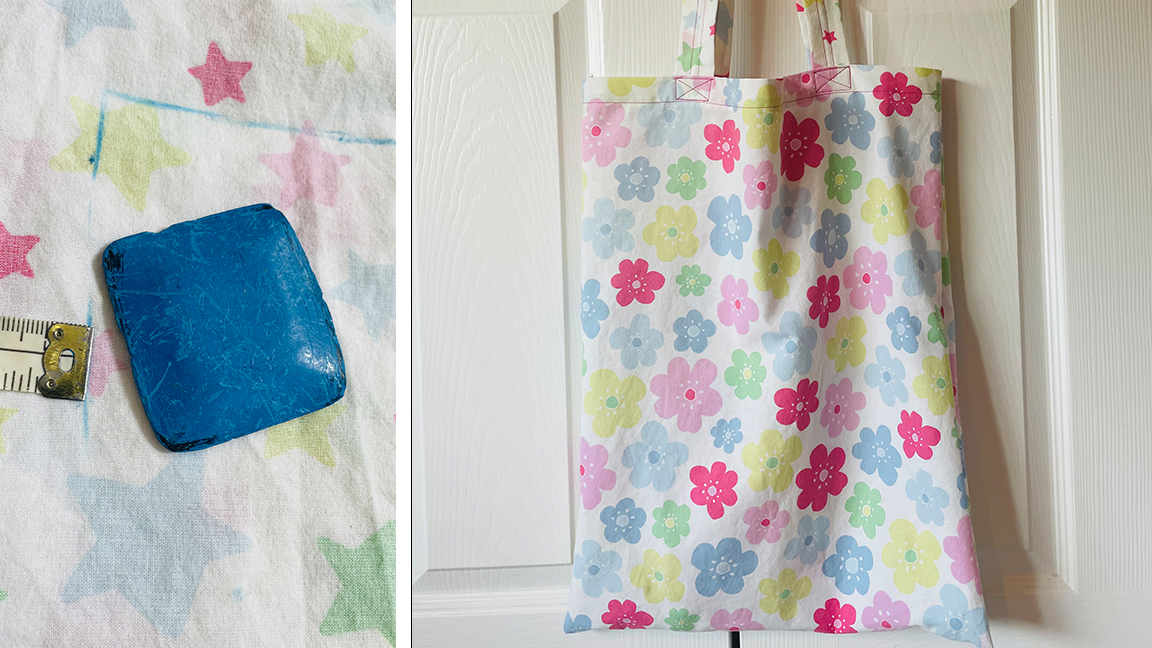
Learning how to make a tote bag is one of the best and most practical ways to get started in sewing. My step-by-step tutorial for a tote bag will take you through transforming a neglected bedsheet, duvet cover or tablecloth into a useful all-purpose tote bag. This is a great beginner sewing project as you don’t need to invest in fabric or a pattern and it is very easy to make.
All you need learn how to sew a tote bag is an hour or two of your time, a basic sewing machine, an old textile item such as a bedsheet, duvet cover or tablecloth, matching or contrasting thread, an iron, fabric scissors, pins, a tape measure, tailors chalk or a fabric marker and a ruler. Read my guide to the best sewing machines for beginners if you've not already found one.
The only prior knowledge you need is how to set up a sewing machine and how to sew a simple straight stitch. You can read tips on setting up a sewing machine my guide to how to start sewing. In making the tote bag below you will learn how to sew hems and French seams, which are great skills to know if you’d like to progress to dressmaking.
How to make a tote bag
My step-by-step tutorial for a tote bag below will teach you the core skills needed to begin sewing, including how to make use of old material, hemming and French seams. I have more advice in my how to sew for beginners feature.
01. Choosing and preparing your fabric

To avoid a seam at the bottom of the tote bag, it will be formed by folding a long strip of your chosen fabric in half. For this reason, it’s best to avoid directional prints or fabric with characters or upright designs as these will become upside down on one side of the bag once the fabric is folded.
Check your fabric for any flaws or stains before you start cutting out and it’s always recommended to pre-wash any fabric at the beginning of a project. If you are using a duvet cover, separate the front and the back before the next step.
02. Cutting out the bag body
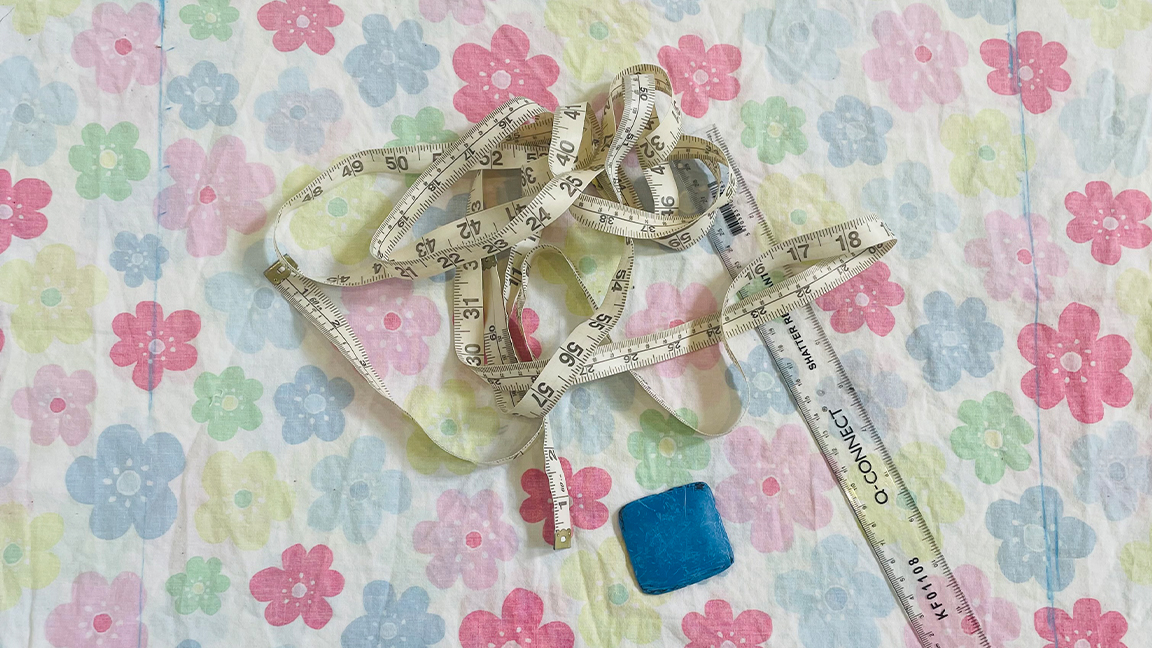
With the right sides of the fabric together, fold up the bottom of the fabric slightly more than the desired height of your bag. My bag measures 51 cm high x 41 cm across. For the height of the bag, from the fold measure up your chosen height + 7cm, so in my case 51.5cm + 7cm = 58cm. Use the end of the tape measure and your tailor’s chalk or fabric marker to mark this measurement several times. Use a ruler to draw a line connecting the marks.
For the width of the bag, measure and mark across in the same way your chosen width + 3cm. So, for my bag 41cm + 3 cm = 44cm. Cut out your rectangle without cutting along the fold at the bottom.
Alternatively, you can create a paper template to draw around, which you can re-use every time you make the bag.
03. Cutting the bag handles
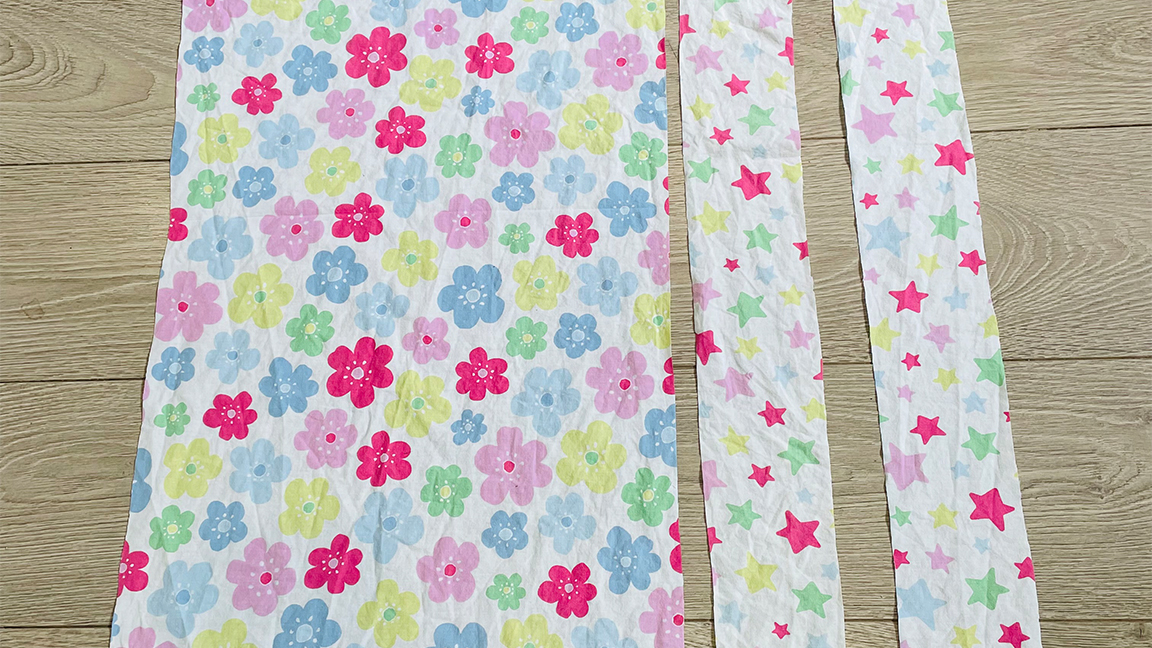
Decide how long you would like the bag handles to be and add 5cm. My handles are 70 cm in length, so the length measurement is 70cm + 5cm = 75cm. With your fabric folded, measure, mark and draw out a rectangle your length measurement x 10 cm wide.
Again, you could use a paper template if you prefer. Cut out the rectangle from both layers of fabric. You now have all the pieces you need to start constructing the bag.
04. Preparing the straps
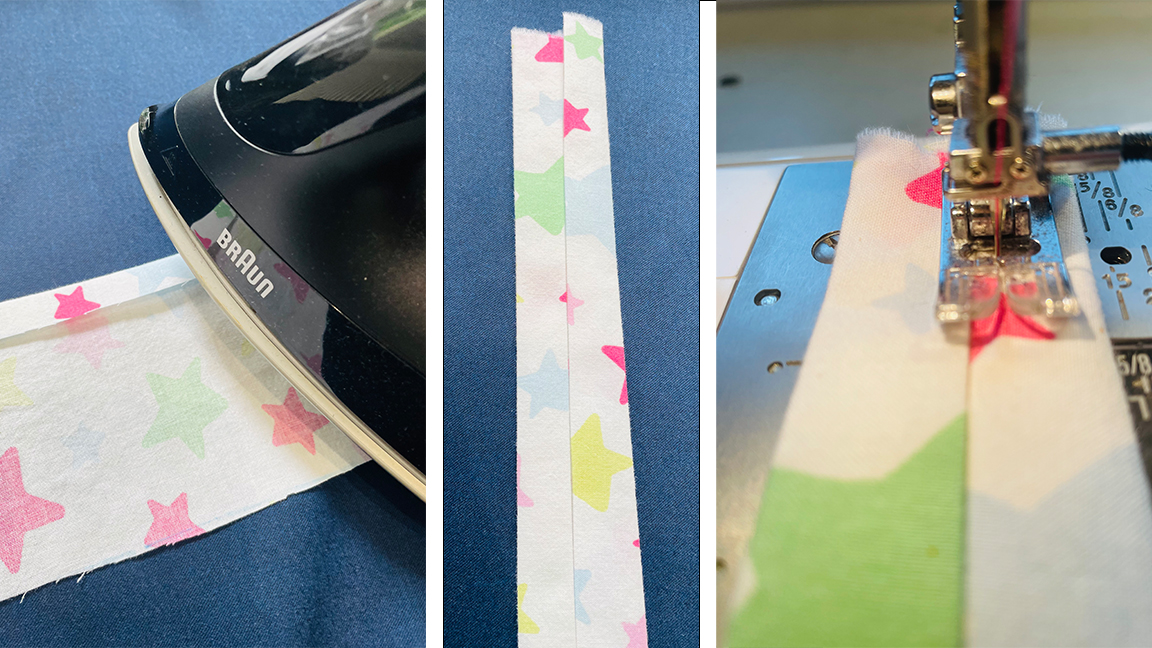
Fold in 1 cm along the length of a handle piece and press with an iron to flatten. It’s easier to fold and press as you work along the piece. Repeat on the other length side of the strap piece. Fold in both length edges to meet at the centre of the strap. Press to hold in place. Repeat this process on the other strap piece.
Stitch all along the length of the straps close to both folded edges to secure in place. Put strap pieces aside.
05. Hemming the top of the bag

To prepare the top of the bag for attaching the strap pieces, turn in 1 cm along one width edge of your bag body piece and press in place (just like you did with the strap pieces). Now fold in again by 2.5 cm, creating a double folded hem, and press again to hold in place. Do exactly the same again at the other end of the bag body piece, ensuring your hems are the same depth on both ends.
06. Positioning the straps
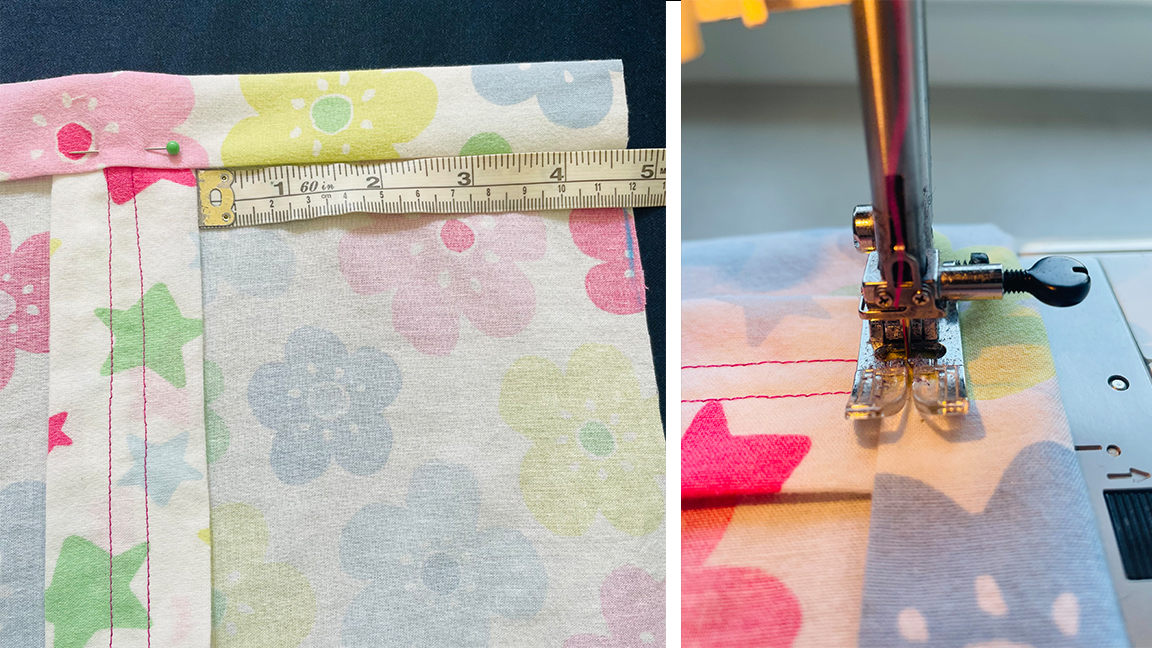
Decide the position of your handles along the width of the bag top. With the unfolded side of the strap facing upwards, place the strap end into your folded hem and secure at a 90-degree angle with a pin. Ensuring the strap is not twisted, place the other strap end into the folded hem to create a handle shape and pin in place as before.
Make sure your handles are centred by checking the distance from the edge of your handle to the edge of the bag on both sides. Repeat with the other bag strap along the other folded width of the bag, ensuring it’s positioned in line with the other strap.
To keep the straps in place, stitch all along the folded edge as close to the fold as possible.
07. Securing the straps
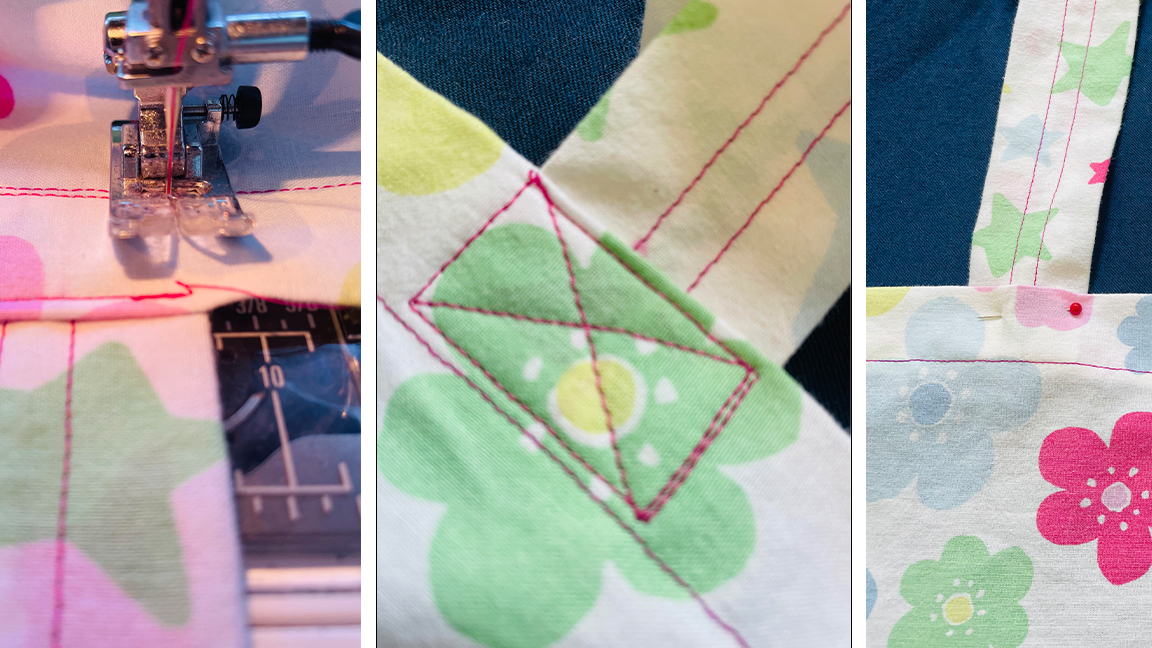
With the right side of the bag facing up, lift the straps upwards and pin them in place at a 90-degree angle to the top of the bag. To stitch the straps in place securely, stitch a box shape where the strap has been folded back. Reinforce the strap attachment by stitching an ‘X’ inside the box from corner to corner. Try to make your box as wide as your strap. You can draw the box and ‘X’ before stitching to make it easier.
08. French seaming the sides to finish

Fold the bag with the wrong sides together to line up the hems at the top of the bag. Using the edge of your presser foot as a guide, stitch along the sides of the bag. Trim the seam as close to your stitching as possible but ensure that you don’t cut through the stitching.
Turn the bag to the inside and press with an iron so that your stitching line is positioned along the edge of the bag. Stitch along the sides of the bag 1 cm from the ironed edges, which will encase and hide the first narrow seam. Turn your bag to the right side and give everything a good press to finish.
What fabric can I use to make a tote bag?
You can use any woven fabric you like, just remember to consider how the design will sit once you’ve folded the fabric for the body of the bag.
How can I make a tote bag more challenging?
When designing and sewing a tote bag you could enhance your fabric with some hand or machine embroidery, an appliqué design or decorative machine stitches.
What’s a good beginner sewing machine to make a tote bag?
As you only need a simple straight stitch to make the bag, any basic mechanical machine is enough. If you’d like to add decorative stitches or machine embroidery, a computerised model might be worth the investment. Read my guide to the best sewing machines for my picks.
Get the Creative Bloq Newsletter
Daily design news, reviews, how-tos and more, as picked by the editors.

Thank you for reading 5 articles this month* Join now for unlimited access
Enjoy your first month for just £1 / $1 / €1
*Read 5 free articles per month without a subscription

Join now for unlimited access
Try first month for just £1 / $1 / €1

Michelle is a sewing teacher, writer and maker based in the Peak District. As a dressmaking tutor and freelance craft feature writer Michelle regularly writes for Love Sewing magazine as well as Woman's Weekly & Woman & Home. As a sewing tutor and avid dressmaker she has extensive knowledge of sewing machines and overlockers, and the know-how of how to match different dressmakers' needs and budgets to the right machine for them.
- Ian DeanEditor, Digital Arts & 3D
